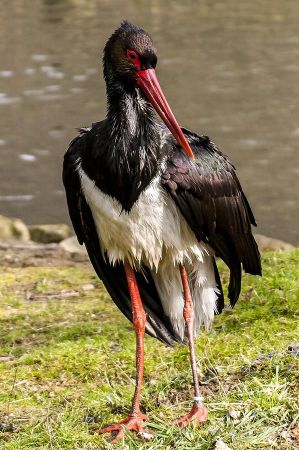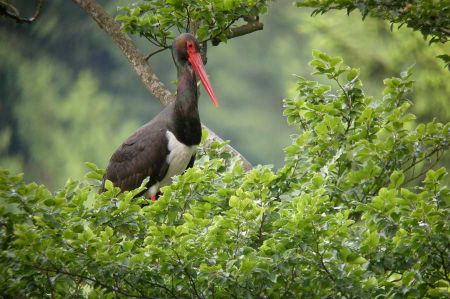Black stork breeds on national natural heritage areas
- Written by Portal Editor
It promises happiness and the blessing of children, is a welcome guest on the roof and is eagerly awaited in spring: When the white stork circles over the house, people are happy.
The black stork, on the other hand, was always the “black sheep” in the stork family. The highly gifted pilot is much more gifted with languages than his monotonously clattering, white “brother”. Although he also uses beak clattering as an instrumental sound, he also has a wide repertoire of loud and quiet calls and songs.
The number of black storks has fallen to eight breeding pairs

But he is shy and lives in secret. Its dark, shiny metallic plumage used to often be its downfall. The black stork was associated with mischief, mercilessly persecuted and decimated. The last 700 breeding pairs in Germany are living on the brink of extinction. In Mecklenburg-Western Pomerania, the population of black storks has fallen to eight breeding pairs. “This is a dramatic downward trend,” says Eva Goris, press spokeswoman for the German Wildlife Foundation.
Food and undisturbed breeding grounds for the black stork are rare

The “National Natural Heritage” (NNE) initiative is counteracting the loss of habitats in Germany. By taking over 1,200 hectares owned by the Federal Republic of Germany, the German Wildlife Foundation is helping to ensure that “wildlife paradises” are permanently preserved. “A black stork pair is breeding on one of our NNE areas in Mecklenburg-Western Pomerania,” says the press spokeswoman. “We consider this a great success!”
The elegant walking bird needs light, mixed deciduous forests
Old black stork territories are almost always in closed forest areas, usually over 100 hectares in size. With the denser population and the resulting lack of optimal breeding places, breeding settlements have also been found in small forest areas in recent years, and in individual cases even in small fields.
The black stork is an obligate long-distance migrant throughout most of its large distribution area; only parts of the populations in western Spain and eastern Portugal as well as the South African black storks are resident birds. Like the white stork, the black stork is primarily a thermal migrant, but it crosses the Mediterranean in larger numbers than the latter because it can cover longer distances in flapping flight. The Sahara is mostly flown around on routes close to the coast or only touched on its outskirts. However, a not insignificant number of storks also choose oasis routes and cross the central Sahara.
West mover
Among westbound migrants, around 10 percent choose the Sicily – Cap Bon, Tunisia passage, while the Aegean Island bridge is flown less frequently. As a rule, however, westbound migrants fly over the Mediterranean in the area around Gibraltar. As the species continues to spread westward, the number of westward migrants is also increasing, some of which already overwinter in southern Spain and southern Portugal, but mostly continue on to West Africa, especially to the Niger wetlands and Senegambia.
East mover
Every nature lover has the opportunity to take responsibility for a small wildlife paradise by sponsoring an area. “It's not just the black stork that benefits from protected areas: tree frogs, grass snakes and many other wild animals find their wildlife paradise on NNE areas.
“The black stork finds what it needs to survive on our NNE areas,” says Goris.
Please also read:
